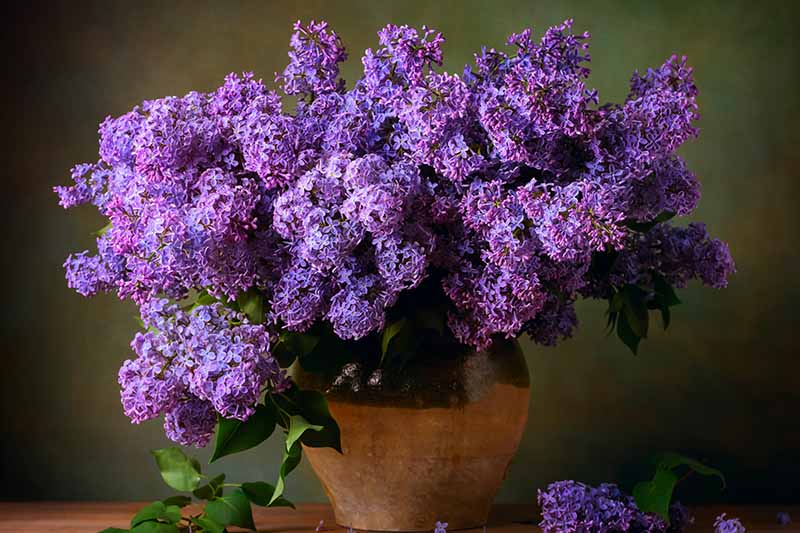Lilacs are known for their beautiful fragrant blooms that announce the arrival of spring. With varieties that can grow over 20 feet tall most gardeners plant lilacs directly in the ground where their roots have plenty of space to spread out. But is it possible to grow lilacs in a pot?
The short answer is yes, you can grow lilacs in pots with proper care and maintenance. However, lilacs prefer to grow unencumbered in the ground. When grown in containers, they require more attention.
Here are some tips for successfully growing lilacs in pots
Choose a Small Variety
-
Look for dwarf or miniature lilac varieties that max out under 5 feet tall.
-
Popular small varieties include: Dwarf Korean, Bloomerang, Miss Kim, and Josee.
-
Avoid full-size lilacs that can reach over 15 feet tall. Their root systems will be too large for pots.
Use the Biggest Container Possible
-
Lilacs need a container at least 2 feet wide and deep.
-
The container should be as wide as the plant’s mature spread.
-
Bigger pots allow more root room and retain more moisture.
Ensure Adequate Drainage
-
Lilacs hate wet feet. Make sure the container has several drainage holes.
-
Add gravel or Styrofoam peanuts at the bottom of the pot for drainage.
-Elevate the pot off the ground to prevent waterlogging.
Plant in Rich, Neutral Soil
-
Use a mix of potting soil, compost, and garden soil. Lilacs like nutrient-rich soil.
-
Test the soil pH. Lilacs prefer a neutral pH around 6.5-7.0.
-
Adjust pH with lime (to lower) or sulfur (to raise) if needed.
Place in Full Sun
-
Lilacs require at least 6 hours of direct sunlight per day to bloom well.
-
Morning sun is ideal. Afternoon shade will protect roots from getting too hot.
-
Avoid planting lilacs in shady areas.
Water Thoroughly and Often
-
Check soil moisture frequently and water when the top few inches become dry.
-
Poorly draining pots may need watering every 2-3 days in summer.
-
Water until it drains from the bottom drainage holes.
Apply Mulch
-
Cover the soil surface with 2-3 inches of mulch to retain moisture.
-
Organic mulch materials like wood chips, pine needles, or bark work well.
-
Keep mulch a few inches away from the trunk to prevent rot.
Fertilize in Spring
-
Apply a balanced fertilizer or slow-release spikes in early spring.
-
Look for a 10-10-10 or 5-10-10 fertilizer ratio. Avoid high-nitrogen formulas.
-
Granular fertilizers that slowly dissolve with each watering work best.
Prune Annually After Flowering
-
Prune immediately after blooms fade to shape and maintain size.
-
Remove up to 1/3 of the oldest branches at the base to rejuvenate.
-
Cut out any dead, diseased, or crossing branches.
Monitor for Pests and Disease
-
Check regularly for signs of powdery mildew, leaf spot, borer insects, scales, and other common lilac afflictions.
-
Remove affected foliage immediately. Use organic treatments if needed.
-
Improve air circulation and avoid wetting foliage to prevent disease.
Overwinter Outside
-
Lilacs need a cold dormancy period and shouldn’t be brought indoors.
-
Place pots against the house foundation or wrap in burlap to protect roots from hard freezes.
-
Stop watering after leaf drop and do not water again until spring.
Growing lilacs in containers requires vigilance but it can be done with the right variety and care regimen. Focus on providing excellent drainage, plenty of sun, frequent watering and fertilization, and annual pruning. With extra attention, you can enjoy the beauty and fragrance of lilacs even without an in-ground garden bed.
Planting Lilacs in Containers! Everything you need to know. I love this Shrub! //FlowerFanatic
FAQ
Do lilacs do well in pots?
Where should you not plant lilac bushes?
How many years does it take for a lilac tree to bloom?
Do lilacs like full sun or shade?
Can Lilacs grow in containers?
Smaller lilac plants, such as our Bloomerang® Dwarf Pink Lilac, can thrive in containers. Appropriate care of potted lilac plants is important. Place it in a south facing window that receives at least 6 hours of full sun every day. More than likely lilacs won’t “thrive” indoors, but they can survive if given enough sunlight.
Can you plant a lilac shrub in a pot?
Planting a lilac shrub in a pot is doable, but it isn’t ideal. Lilacs can get huge, and they grow best when their roots are free to spread out. When growing lilacs in containers, the first step is to pick a variety that stays relatively small. Some dwarf varieties exist, such as: Some non-dwarf varieties that stay small include:
How big should a lilac pot be?
For planting lilacs, you need to choose a pot at least 2 feet wide. Lilacs have very large root systems. Expect them to be as wide as the plant’s foliage or canopy, and choose a container that can accommodate rapid growth. When lilac roots are crowded, flowering will be reduced, and that defeats the purpose of featuring these beauties on the patio.
Do lilacs need potting soil?
Rocks and broken pot pieces are not recommended for pot bottoms, as they are more likely to clog and hinder drainage than are clear, open holes. For lilacs, use garden soil mixed with potting mix. In a typical container garden, straight potting soil is the norm. It’s light, well-drained, and nutritionally balanced.
- A Complete Guide to Caring for Yuki Cherry Blossom Shrub - January 23, 2025
- Identifying Red Hot Poker Seeds: What to Look For When Harvesting Torch Lily Pods - January 23, 2025
- A Complete Guide to Harvesting Evening Primrose Seeds - January 23, 2025

